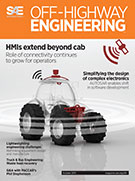Technical Paper
The Operation Phase as the Currently Underestimated Phase of the (Safety and Legal) Product Lifecycle of Autonomous Vehicles for SAE L3/L4 – Lessons Learned from Existing European Operations and Development of a Deployment and Surveillance Blueprint
2023-12-29
2023-01-1906
Advanced Autonomous Vehicles (AV) for SAE Level 3 and Level 4 functions will lead to a new understanding of the operation phase in the overall product lifecycle. Regulations such as the EU Implementing Act and the German L4 Act (AFGBV) request a continuous field surveillance, the handling of critical E/E faults and software updates during operation. This is required to enhance the Operational Design Domain (ODD) during operation, offering Functions on Demand (FoD), by increasing software features within these autonomous vehicle systems over the entire digital product lifecycle, and to avoid and reduce downtime by a malfunction of the Autonomous Driving (AD) software stack.






